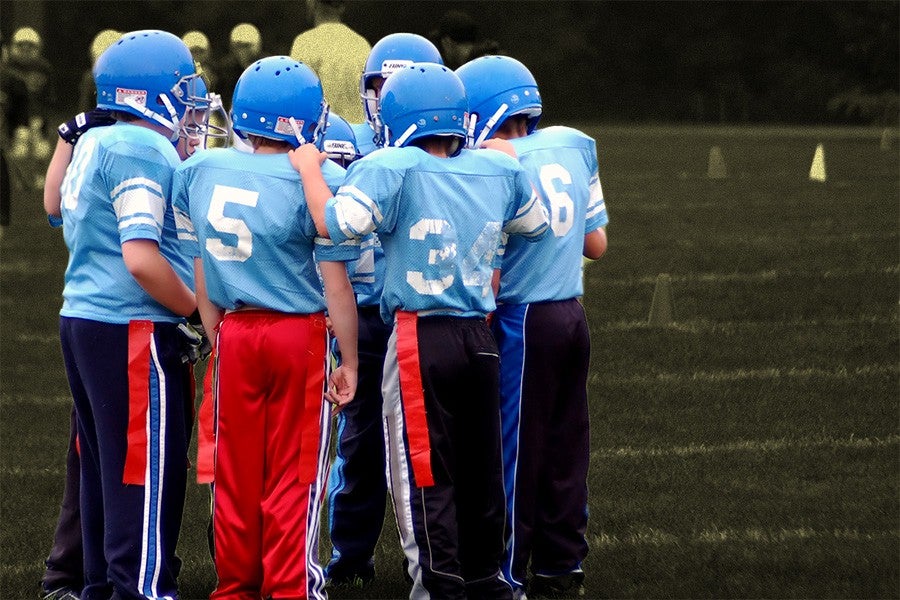This week’s Monday Night Football game between the Pittsburgh Steelers and Cincinnati Bengals revealed the glaring hypocrisy at the center of the NFL: Despite the league’s ongoing effort to eliminate head-to-head collisions and make the game “safer,” the sport remains inherently violent — to the point that it’s often difficult to watch in good conscience. Two things in particular stood out: Steelers linebacker Ryan Shazier leaving on an ambulance after suffering a spinal cord concussion (an injury that’s every bit as horrific as it sounds), and Bengals linebacker Vontaze Burfict being wheeled off on a stretcher after getting blindsided by a vicious block.
https://twitter.com/FootballPIayers/status/937945692127006721
Vontaze Burfict was carted off the field after this BRUTAL block from JuJu Smith-Schuster. Schuster proceeded to stare down Burfict before stepping over him while he was unable to move. ?#MNF #Steelers #BengalsVsSteelers #Bengals pic.twitter.com/rx5KiR2J4G
— RichInFacts (@RichInFacts) December 5, 2017
The first hit wasn’t flagged for penalty (despite some believing it to be illegal); the second was (despite many believing it was perfectly acceptable).
#NFL players can't play the game the way it's supposed to be played anymore due to all the rules. Last nights #MNF game took us back a decade or so & now the majority of the media is over analyzing & in panic mode. It's a violent game. If you don't like it, don't watch it. SMH…
— Mike Karney (@Karney44) December 5, 2017
Either way, the hits were so brutal and the resulting images so disturbing, that even NFL beat writers such as Gregg Rosenthal, who works for the NFL itself, and Sports Illustrated’s Peter King, a man regarded as the de facto mouthpiece for league commissioner Roger Goodell, immediately questioned whether the very nature of the game is unsafe.
One of the most brutal things about football is how it just starts again after something like that.
— Gregg Rosenthal (@greggrosenthal) December 5, 2017
Imagine being a parent with a child who loves football and want to play. You’re watching this game. You ask, “How can I let my child play anything other then flag? Ever?"
— Peter King (@peter_king) December 5, 2017
King’s comment about pushing kids toward flag football (and away from tackle) is hardly a new idea. Conversations about whether kids should even play tackle football have been ongoing since the mid-2000s, when reports about the long-term effects of football-induced brain trauma first surfaced. But last night’s game and recent research on the effects of football on children’s brains has brought that debate to the forefront — with one camp saying that flag (or some other modified version of the current game) will become increasingly popular, and another arguing that nothing will shake football’s preeminence in American culture.
Concussion awareness advocate Kimberly Archie is on the former’s side. She believes children should be barred from playing tackle football until they’re at least 14 years old (or around the time they’re freshmen in high school). “In the next few years, tackle football will be completely banned at the youth level,” Archie predicts.
The liability will be too great, and youth leagues will find themselves “uninsurable,” she argues. Indeed, many state high school athletic organizations and youth football leagues are already finding themselves the subject of class-action lawsuits brought by parents of children who have football-related neurological diseases. Archie is the lead plaintiff in an ongoing case against Pop Warner, the largest youth football organization in the country. Her son, Paul Bright, died at just 24 years old and was posthumously found to have chronic traumatic encephalopathy, a brain disease common in former football players.
“In the beginning, will [flag football participation] numbers be as high as tackle football? No,” she says. “But it can be as popular as soccer.”
Archie foresees a professional flag football league in the not-so-distant future, with flag and tackle coexisting alongside each other, much like beach and indoor volleyball do now.
But while flag football is the fastest-growing youth sport in the country, many doubt that the game will ever percolate up to the professional level the way Archie predicts. Tackle football participation rates at the youth and high school level have begun to level off after decreasing sharply for several years, and many think that the changes being enacted at those levels are making a positive difference, according to Cyd Zeigler, editor and co-founder of OutSports, a website that covers LGBT issues in athletics, and a high school and junior college football referee.
“The sport is changing,” Zeigler says. “The way coaches coach is changing. The way kids play is changing.” The most important of those changes is teaching kids to not use their heads in collisions and instead tackle with their shoulders. “I saw this year, more than any other year, kids changing their decision-making on the field. I saw kids initially lower their heads, and then come back up and tackle with their shoulders.”
There’s also been a tangible shift in the culture of football, and its attitude toward violence. The MNF announcers called the hit on Burfict shameful, for instance. “Ten years ago, that hit would’ve been considered awesome,” Zeigler says. “The fact that 10 years later there’s an ESPN commentator saying a player should be ashamed of himself for that hit tells you the culture is changing.”
Still, looming over all of this is the uncomfortable truth that it’s not large, violent hits that cause CTE and other neurological disorders in football players — it’s the accumulation of small, routine, so-called subconcussive impacts, over the course of many years. And research shows that the younger a player starts playing the sport, the more susceptible he is to that brain damage. Even Zeigler concedes there’s no amount of regulation that will ever completely eliminate that danger.
“To me, the game has gotten safer,” he says. “But it’s never going to be safe.”
